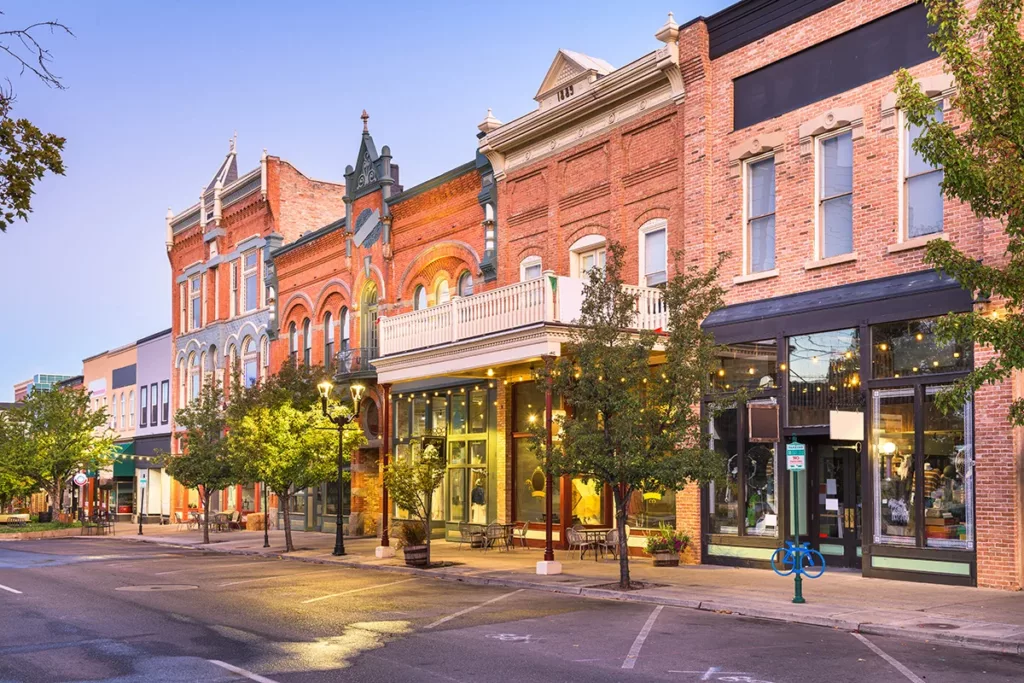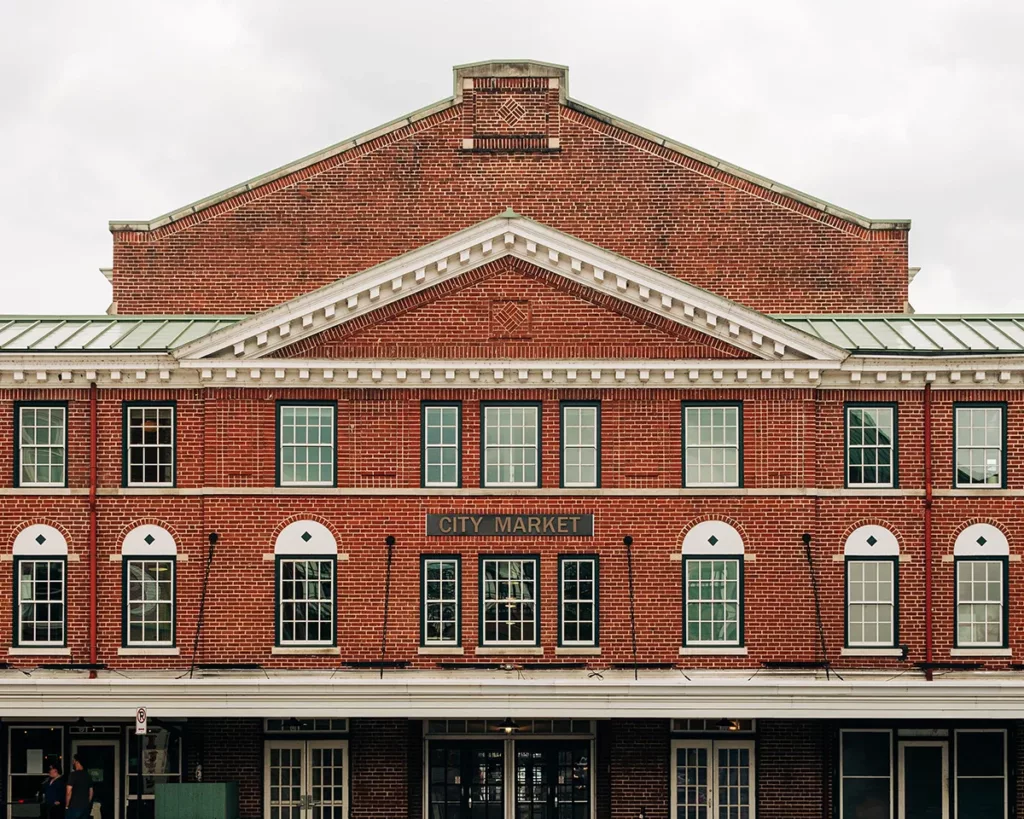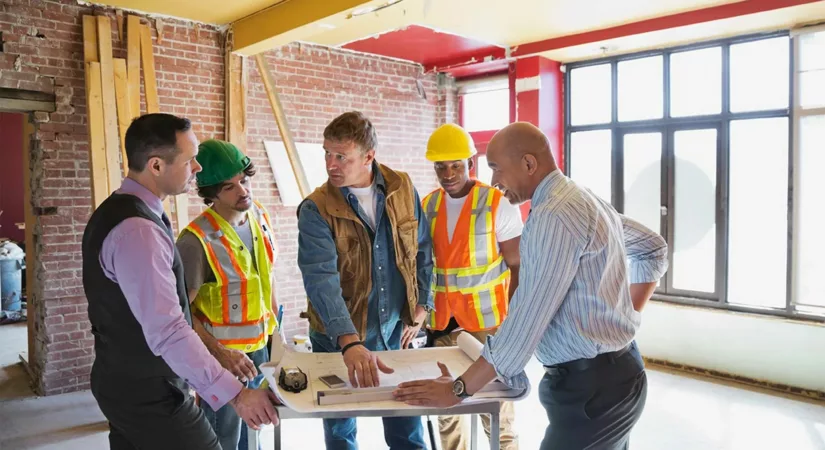Exposed brick, ornate crown molding, and genuine hardwood floors—these are prime examples of the charming details we love to see in historic buildings. These structures honor legacies with their architecture, but sometimes, well-loved historic buildings need renovations to remain safe and functional by modern-day standards.
In this blog, we will explore key considerations for ensuring a successful, compliant, and respectful historic commercial renovation project.
What Is a Historic Renovation Project?
Undertaking a commercial historic renovation project requires careful consideration to preserve the building’s unique character and abide by regulations. This begins with understanding what a historic renovation officially means, and how it differs from other construction approaches.
The National Park Service (NPS) outlines four primary approaches for the treatment of historic properties1:
- Renovation (Rehabilitation): Sometimes, a historic property must be updated for contemporary use. This may involve alterations or additions, but the property’s historical character must be preserved.
- Preservation: This method prioritizes maintaining and repairing existing historical materials. The main goal is to retain the property’s form as it has naturally changed throughout history.
- Restoration: This aims to return a property to a specific point in its past. Any evidence of other historical periods is removed to create a snapshot of that particular era.
- Reconstruction: This involves rebuilding lost or destroyed sections of a historic property to enhance historical interpretation and understanding.
At its core, the primary goal of a historic renovation project is to respectfully update a building for contemporary use in the most minimally invasive way possible.
4 Renovation Considerations for Historic Commercial Buildings

Renovating a historic commercial building requires careful planning and consideration. These buildings hold significant historical and community value, which is why it’s so important to take the proper steps to honor their legacies.
Below, we list essential considerations for successful historic commercial building renovation projects.
1. Understand Historic Preservation Guidelines
Many historic commercial buildings are subject to guidelines and regulations that dictate how renovations must be approached. It’s essential to check with local and state governments to understand all necessary guidelines.
While specific regulations may vary depending on the building’s location, industry, and unique history, the NPS provides a set of best practices regarding historic renovations. Compliance is essential for qualifying as a certified rehabilitation and may affect eligibility for some grants or tax incentive programs1.
Here is a basic overview of the renovation standards posed by the NPS:
- Minimize changes: Use the property as historically intended or with minimal changes to its distinctive features and materials.
- Preserve character: Retain and preserve historic character and avoid alterations that remove distinctive elements.
- Authenticity: Maintain the property as a genuine record of its time and avoid false historical additions.
- Gentle treatments: Prioritize repairing historic features instead of replacing them, using the gentlest methods possible.
- Compatible additions: Ensure any new construction is distinguishable from genuine historic elements yet compatible with them to preserve the property’s integrity.
Understanding these guidelines will help protect the building’s integrity and contribute to its long-term preservation.
2. Verify the Building’s Historical Significance

Before the project begins, you will need to confirm that the building is historic and registered as such. To verify historical registration, refer to the National Register of Historic Places2.
You may also want to research the building’s unique history in depth. This will reveal whether any past renovations have occurred, which architectural elements are truly historic, and any problem areas that may need to be addressed later in the project.
If applicable, referring to the building’s Historic Structure Report (HSR) can provide valuable insight about the property. You can also check with your specific state’s historic society, or any organizations in your city or county.
3. Preserve Historical Architectural Details
Most historic commercial buildings feature unique architectural details that contribute to their unique charm. This includes facade features like cornices and moldings, original flooring, entryways, doorframes, or other elements alluding to the building’s history.
Preserving these elements during renovation is essential for maintaining a building’s historical significance. Unless doing otherwise compromises safety or structural integrity, historic architectural details should be repaired rather than replaced.
4. Balance Preservation with Modernization

Historical integrity is important, but so is safety and functionality. You’ll need to strike a balance between preservation and modernization to ensure the building is suitable for commercial use.
Some examples of minimally invasive modernization upgrades include:
- Retrofitting historic lighting fixtures with LED light bulbs to preserve the original look while improving energy efficiency
- Modernizing restrooms with contemporary fixtures and updated plumbing while retaining historic tiling or design elements
- Installing energy-efficient windows that match the original style to improve energy efficiency without drastically altering the building’s appearance
- Upgrading HVAC systems using concealed ductwork to maintain the building’s aesthetic
Partner With the Historical Renovation Experts at DRF
Historic commercial buildings often require renovations to remain safe and usable by today’s standards. With careful planning and consideration, you preserve a building’s history while turning it into a valuable asset for your business.
At DRF Builders, we understand the unique nuances of historical renovation projects. We offer a comprehensive suite of commercial construction services designed to support the long-term success of your business. Contact us online today or call us at (208)-254-2002 to learn more about how we can bring your vision to life.
References
- The Secretary of the Interior’s Standards for the Treatment of Historic Properties: Rehabilitation as a Treatment and Standards for Rehabilitation (U.S. National Park Service). (n.d.). https://www.nps.gov/articles/000/treatment-standards-rehabilitation.htm
- National Register of Historic Places (U.S. National Park Service). (n.d.). https://www.nps.gov/subjects/nationalregister/index.htm




